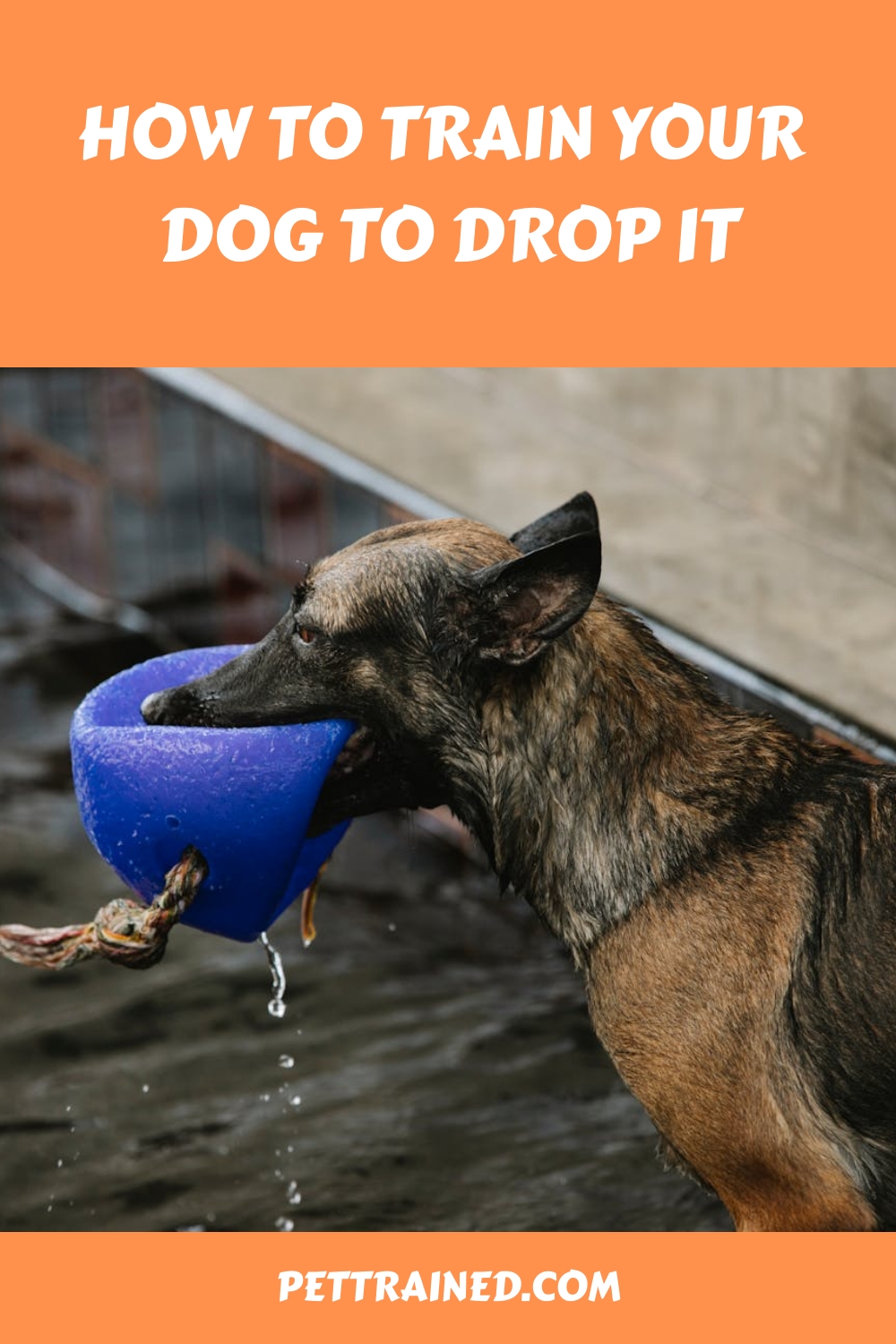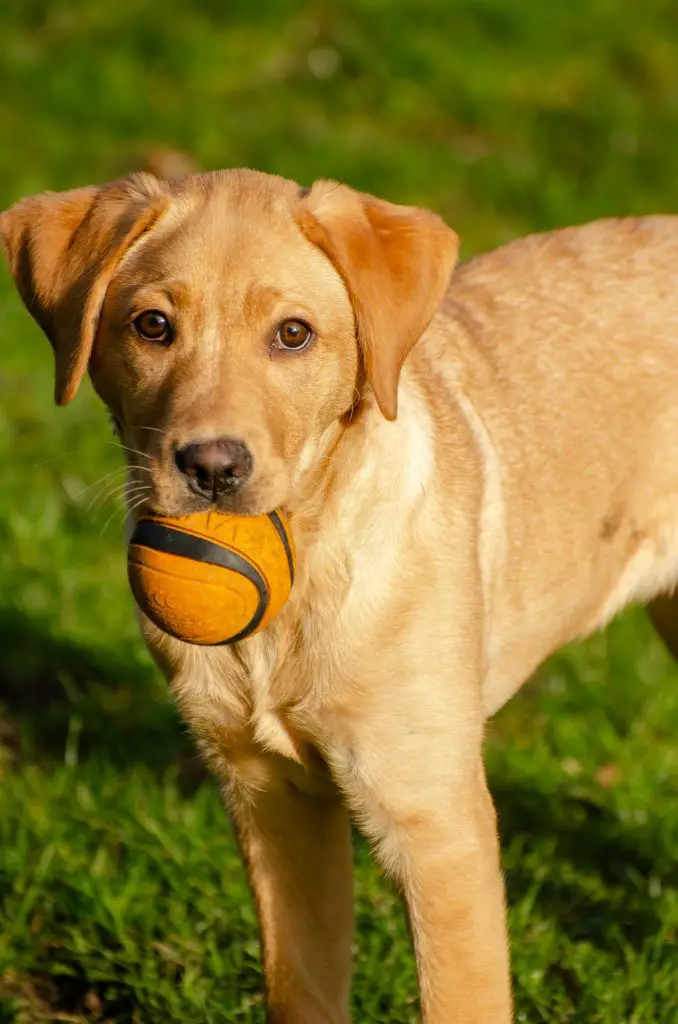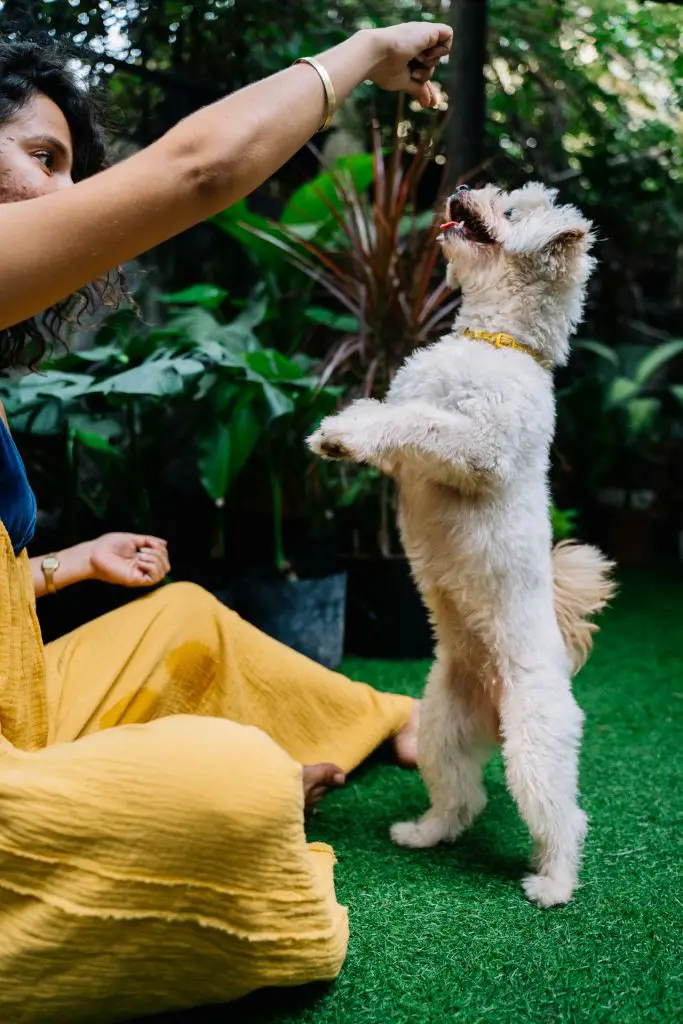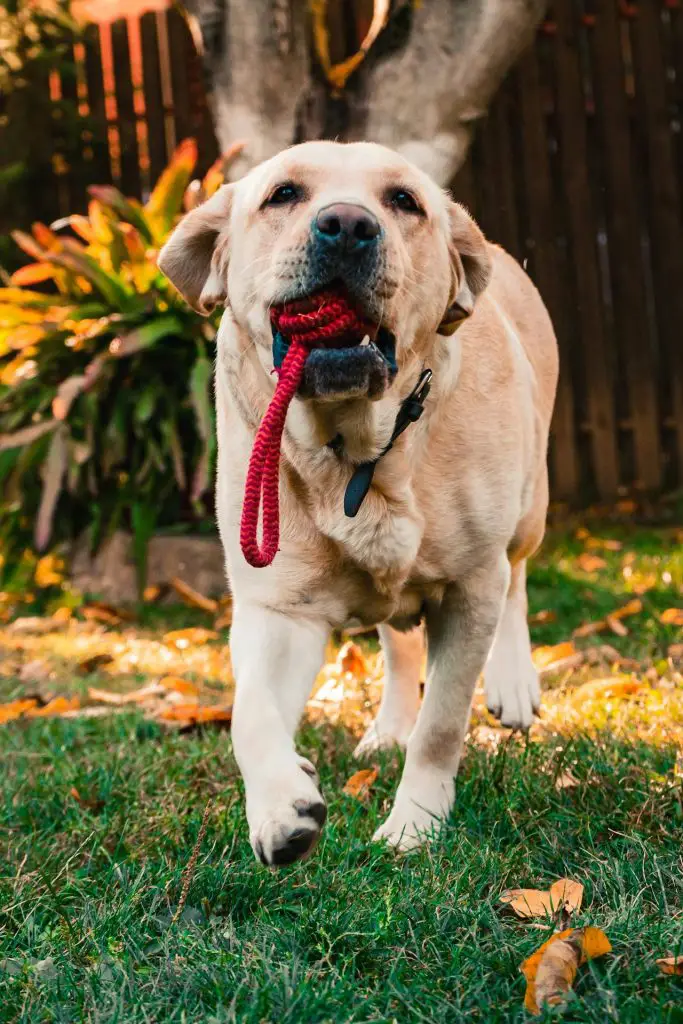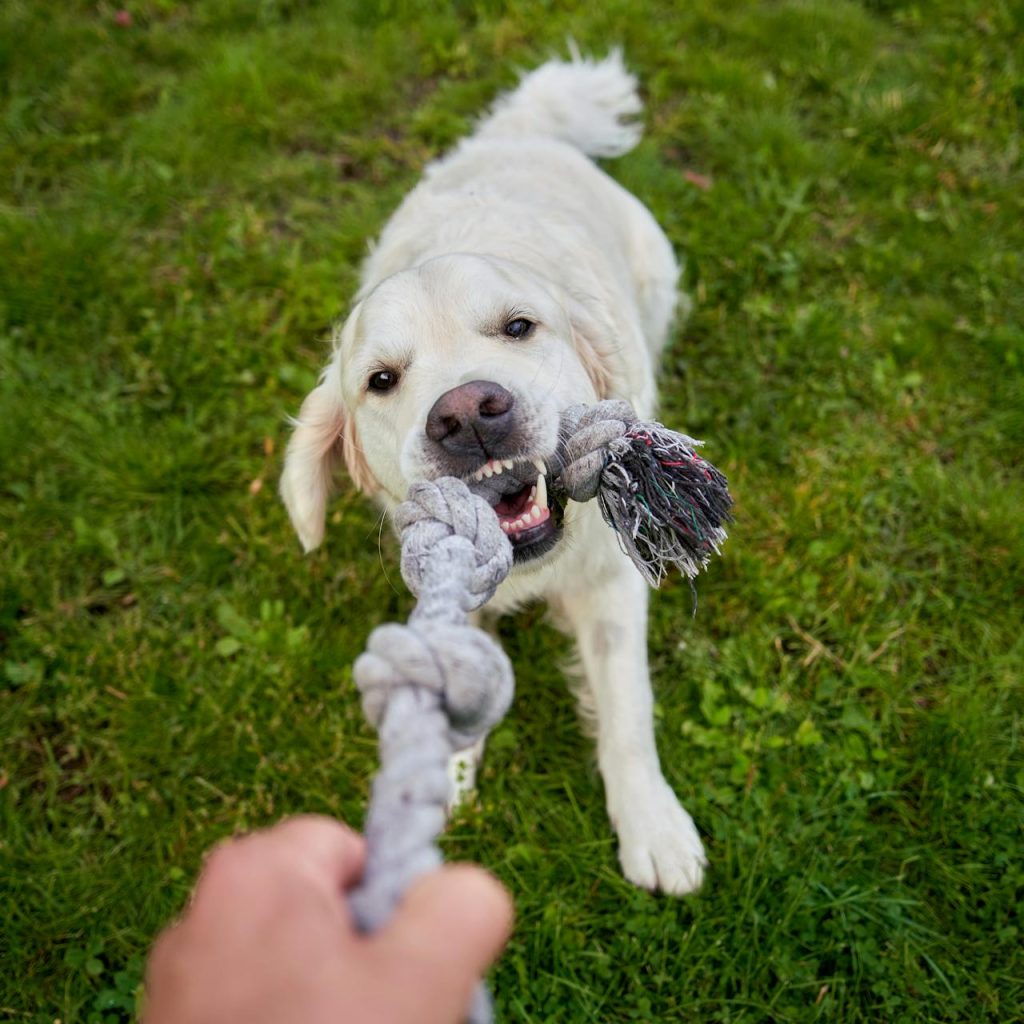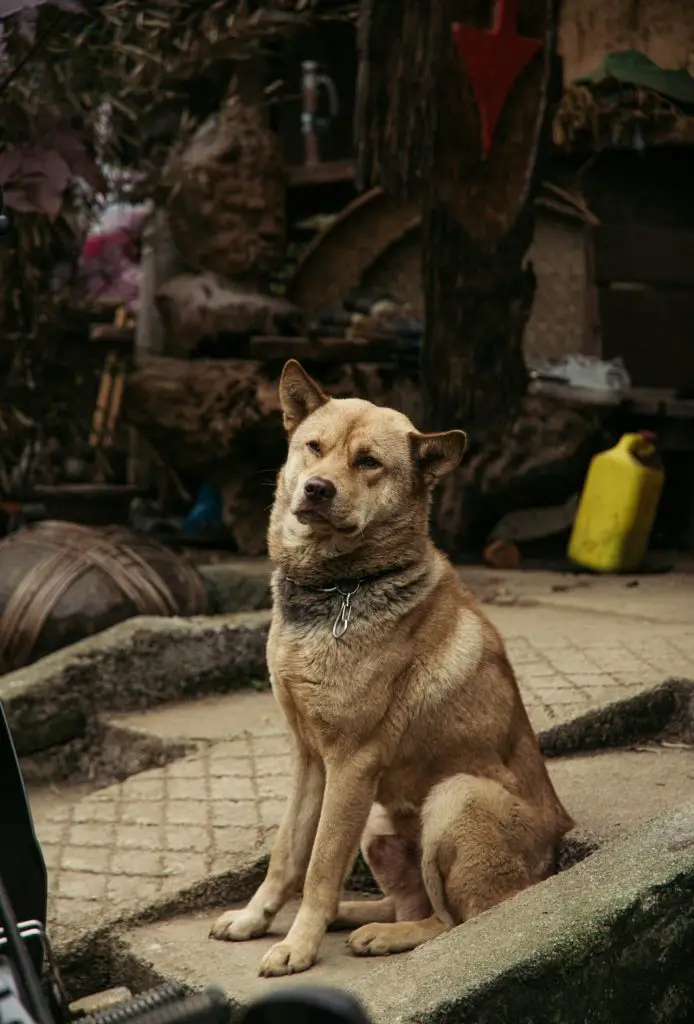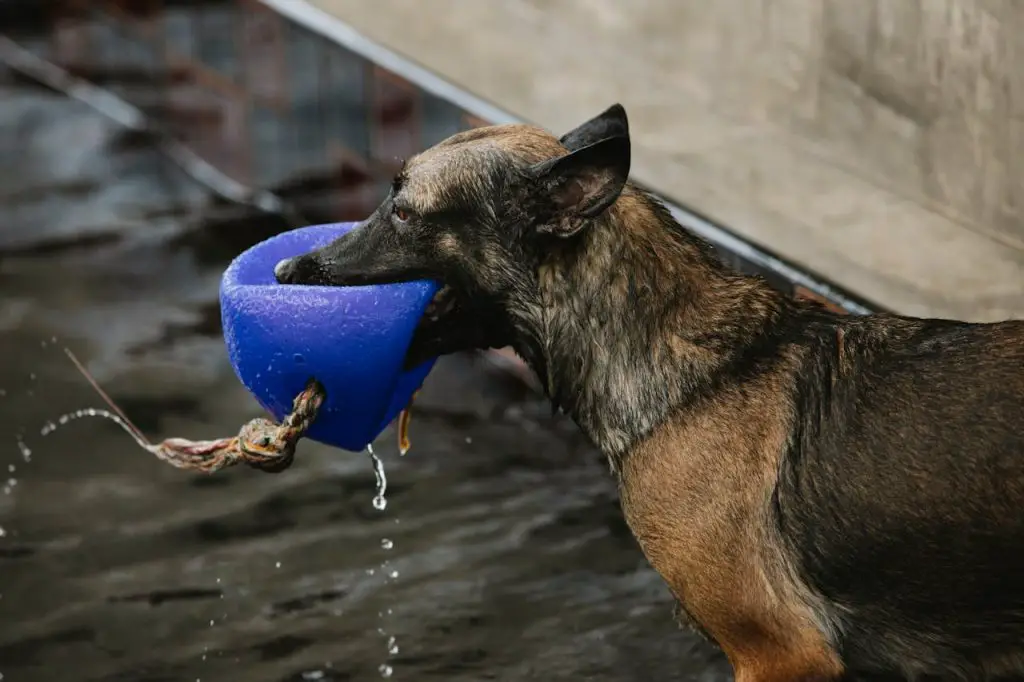
Did you know that teaching your dog to “drop it” can potentially save their life? This vital command isn’t just about retrieving toys; it’s a safety measure that can prevent your furry friend from ingesting harmful objects or substances. While it may seem challenging at first, with the right approach, you can train your dog to release items on command, regardless of their perceived value. Whether you’re dealing with a stubborn pup or a quick learner, mastering this skill will give you peace of mind and strengthen your bond with your canine companion. Let’s explore how you can effectively teach this essential command to your four-legged friend.
Table of Contents
Key Takeaways
- Start with low-value objects and use high-value treats as rewards during short, regular training sessions.
- Use clear, consistent verbal cues and hand signals while immediately rewarding the dog for dropping items.
- Gradually progress to high-value items, ensuring rewards surpass the value of the dropped object.
- Practice in various environments, slowly increasing distractions to solidify the command’s understanding.
- Maintain and reinforce the skill through regular practice, varied rewards, and integration into daily activities.
Understanding the “Drop It” Command
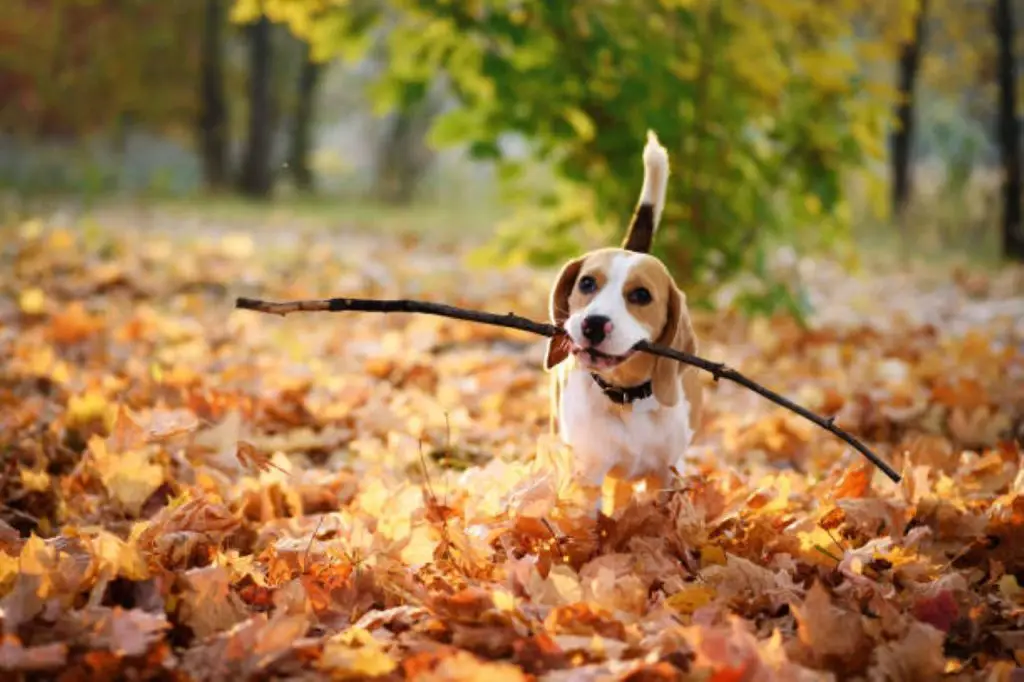
At its core, the “Drop It” command is an essential skill for any well-trained dog. This command instructs your canine companion to release an object from their mouth immediately.
Understanding the importance of obedience in this situation is vital for both you and your pet’s safety.
When your dog learns to drop items on command, you’ll prevent potential hazards like ingesting dangerous objects or engaging in destructive behavior.
Like other training commands, teaching “Drop It” requires consistency and patience to achieve the best results.
This post contains affiliate links. However all the information provided on this site are my own honest opinions. See more in Disclaimer.
The “Drop It” command relies on clear communication between you and your dog. It’s not just about getting them to release an item; it’s about establishing trust and reinforcing your role as the pack leader.
The benefits of training this command extend beyond mere obedience. It can help in various situations, from preventing your dog from eating something harmful to retrieving valuable items they’ve picked up.
To effectively teach this command, you’ll need to understand your dog’s motivations and use positive reinforcement techniques.
By consistently practicing and rewarding your dog for dropping items, you’ll create a reliable response that can be invaluable in everyday situations and emergencies alike.
Essential Tools and Treats
Equipped with the right tools and treats, you’ll set yourself up for success when training your dog to “Drop It.” Start by gathering a variety of high-value treats that your dog finds irresistible.
Choose small, soft morsels that can be quickly consumed, allowing for seamless reward timing during training sessions. Positive reinforcement is vital to encouraging your dog’s cooperation and fostering a stronger bond during the training process.
Necessary training tools include a sturdy leash for controlled practice and a clicker for precise reinforcement. The clicker serves as a bridge between the desired behavior and the reward, enhancing your dog’s understanding of the command.
When selecting toys, opt for a diverse range that appeals to your dog’s preferences, such as squeaky toys, balls, or rope tugs.
Understanding dog psychology is essential for effective motivational techniques. Use your dog’s natural instincts and desires to your advantage.
Incorporate toy variety to maintain interest and prevent boredom during training. Proper leash handling guarantees safety and control, especially when practicing outdoors or with distractions present.
Starting With Low-Value Objects
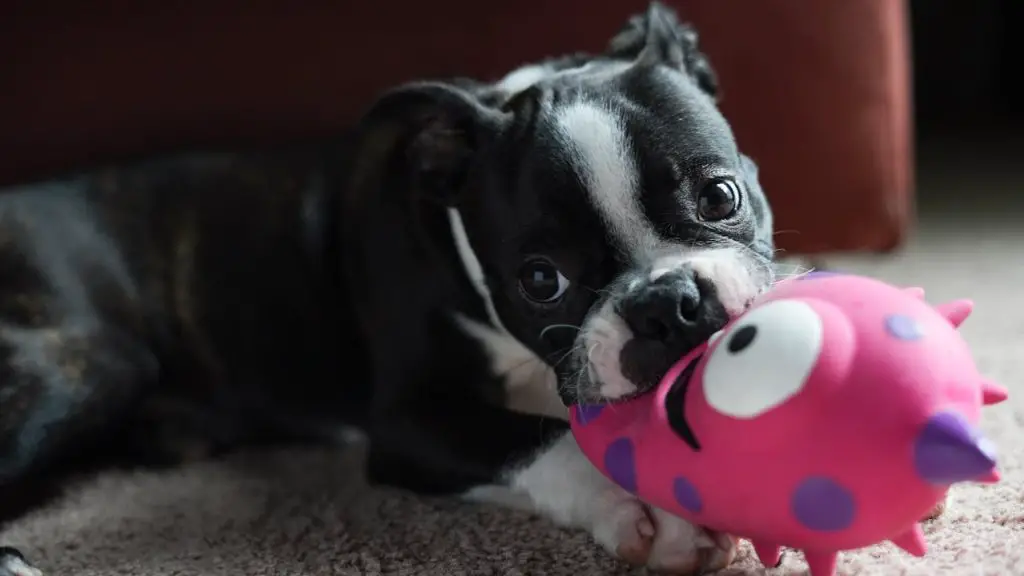
Trainers recognize that beginning with low-value objects is essential when teaching your dog to “Drop It.” Start by selecting items your dog isn’t particularly attached to, such as a plain rubber toy or a simple piece of rope.
These low-value distractions serve as an ideal starting point for your training sessions. Consistency is key in dog training, so aim for short, regular sessions to reinforce the behavior effectively.
This approach aligns with the positive reinforcement techniques that form the foundation of successful dog training.
Introduce the chosen object to your dog and allow them to engage with it briefly. Once they’ve taken it in their mouth, offer a high-value treat as an exchange.
As you present the treat, give the “Drop It” command in a clear, firm voice. Most dogs will naturally release the low-value item to obtain the more desirable treat.
Immediately praise your dog and provide the treat when they release the object. Repeat this process several times, gradually increasing the duration your dog holds the item before you give the command.
As your dog becomes more proficient, you can begin to vary the initial rewards, alternating between treats, praise, and play. This helps reinforce the behavior without relying solely on food motivation.
Remember to keep training sessions short and positive to maintain your dog’s enthusiasm for learning this vital command.
Progressing to High-Value Items
Once your dog has mastered the “Drop It” command with low-value items, it’s time to raise the stakes. Introducing high-value items will challenge your dog’s impulse control and reinforce the command’s importance.
Begin with moderately enticing objects, such as a favorite toy or a low-value treat, and gradually progress to more tempting items. As you introduce high-value distractions, maintain a consistent training approach.
Use the same verbal cue and hand signal you’ve established. When your dog successfully drops the item, immediately offer a reward that surpasses the value of the dropped object.
Reward timing is vital; a swift response reinforces the desired behavior.
Practice in various environments to solidify the command. Start in a quiet room and progressively move to more distracting settings. If your dog struggles with a particular high-value item, take a step back and work with less tempting objects before trying again.
Remember to keep training sessions short and positive. With patience and persistence, your dog will learn to drop even the most prized possessions on command, ensuring their safety and your peace of mind.
Practicing in Different Environments
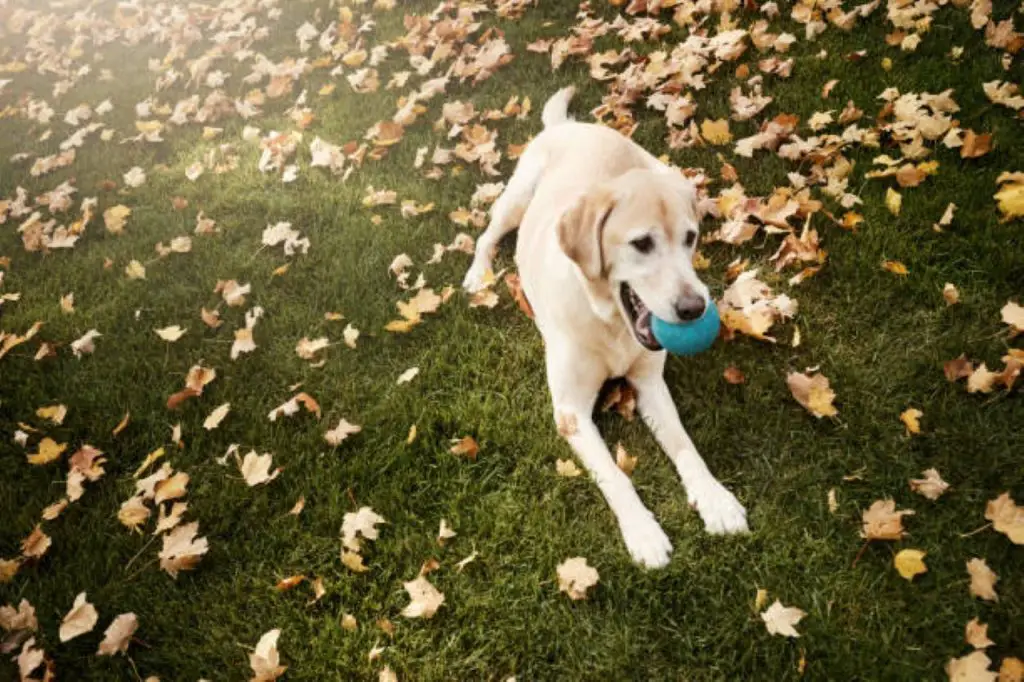
Once your dog has mastered the “drop it” command indoors, it’s time to expand your training to outdoor environments.
You’ll need to practice in increasingly distracting settings, such as parks or busy streets, to guarantee your dog responds consistently.
Gradually introduce more challenging scenarios, like dropping a toy when other dogs are present or releasing a found object on a walk, to solidify your dog’s understanding and compliance with the command.
Indoor Vs. Outdoor Training
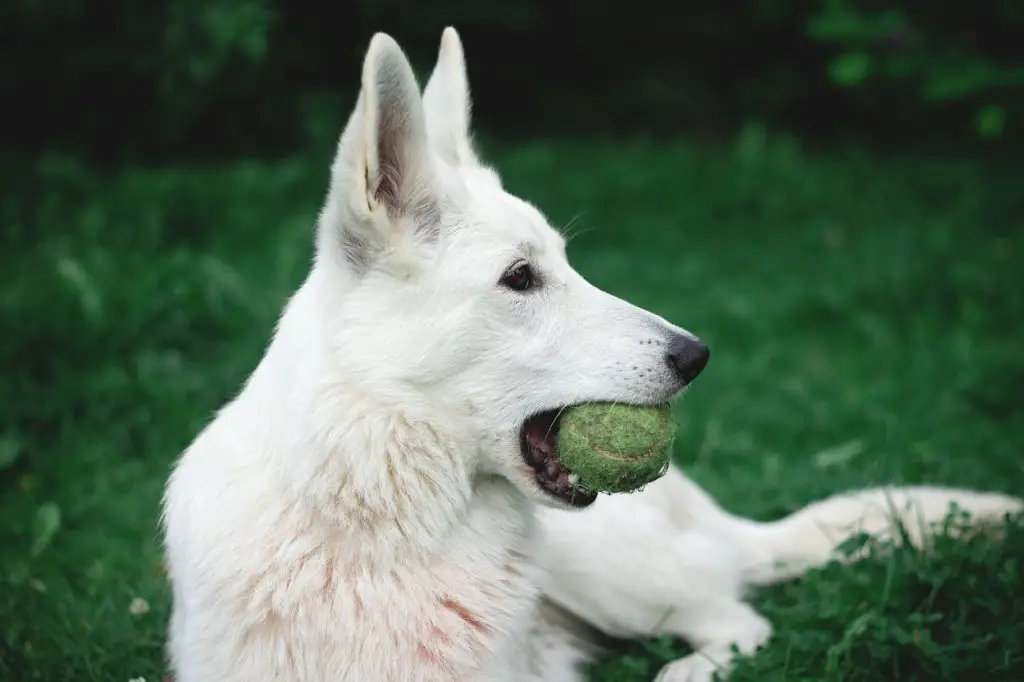
Most dogs benefit from practicing the “drop it” command in various environments. Indoor training provides a controlled setting with fewer distractions, allowing you to focus on the basics.
However, outdoor training introduces real-world challenges that test your dog’s obedience. When training indoors, consider the available space and potential indoor distractions like toys or furniture.
Trending in Dogs:
Outdoors, you’ll encounter outdoor obstacles, varying surface types, and unpredictable weather conditions.
To effectively train in both settings:
- Start indoors: Begin in a quiet room with minimal distractions, gradually increasing difficulty by introducing noise levels and environmental factors.
- Shift to outdoor spaces: Move to a fenced yard or quiet park, incorporating leash handling and adapting to different surface types.
- Simulate real-world scenarios: Practice in busy areas with more distractions, mimicking situations where the “drop it” command is essential.
Remember that each environment presents unique challenges. Indoor training allows for precise control, while outdoor training tests your dog’s ability to focus amidst distractions.
Adapt your approach based on your dog’s progress, always ensuring a positive and rewarding experience in both settings.
Distracting Environments Practice
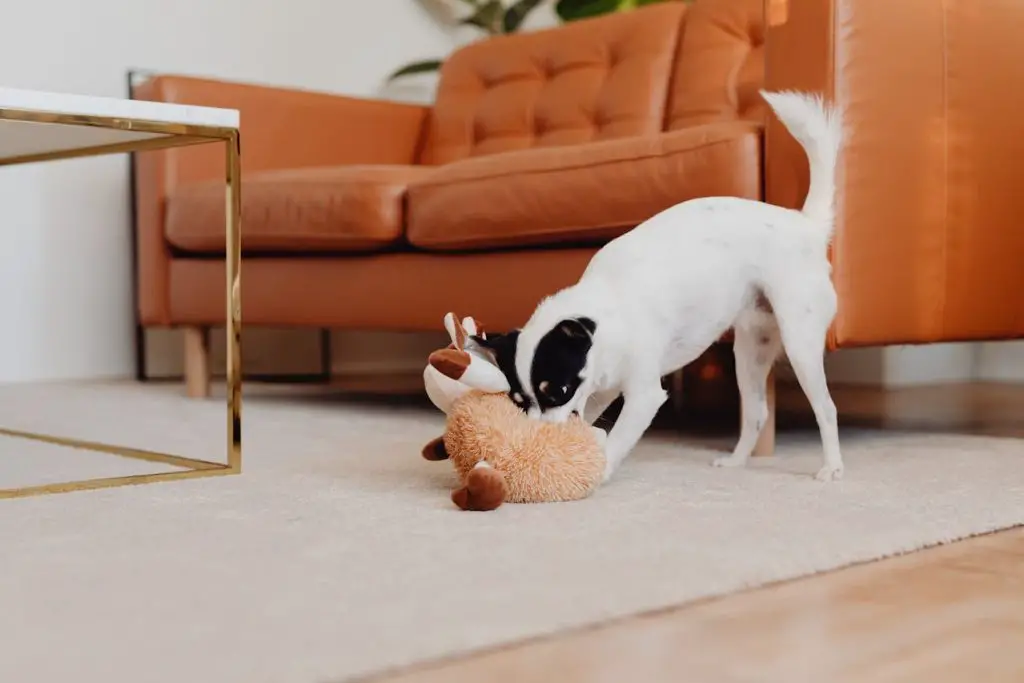
As your dog becomes more proficient with the “drop it” command, it’s important to practice in increasingly distracting environments.
Start by moving your training sessions to different rooms in your house, then progress to your backyard or a quiet park. Gradually introduce more challenging locations with higher levels of distraction.
Implement distraction techniques to test your dog’s focus. Have a family member walk by or bounce a ball nearby while you’re practicing. Use environmental cues to your advantage; train near playground equipment or in areas with mild traffic noise. This will help your dog generalize the command across various settings.
Always set your dog up for success. If they’re struggling in a new environment, temporarily reduce the difficulty level. You can do this by using higher-value treats or moving slightly farther from the distractions.
As your dog improves, slowly increase the challenge again.
Remember to remain patient and consistent. Some dogs may need more time to adjust to distracting environments than others.
Keep training sessions short and positive, ending on a successful note to maintain your dog’s enthusiasm for learning.
Troubleshooting Common Challenges
When training your dog to “drop it,” you may encounter several common challenges.
Stubborn or possessive dogs might resist releasing items, while high-value objects can prove particularly tempting for your pet to hold onto.
Positive reinforcement techniques are vital for encouraging compliance and making the training process enjoyable for your dog.
If your dog’s response to the command becomes inconsistent, it’s important to revisit and reinforce the basics of the training process.
Stubborn or Possessive Dogs
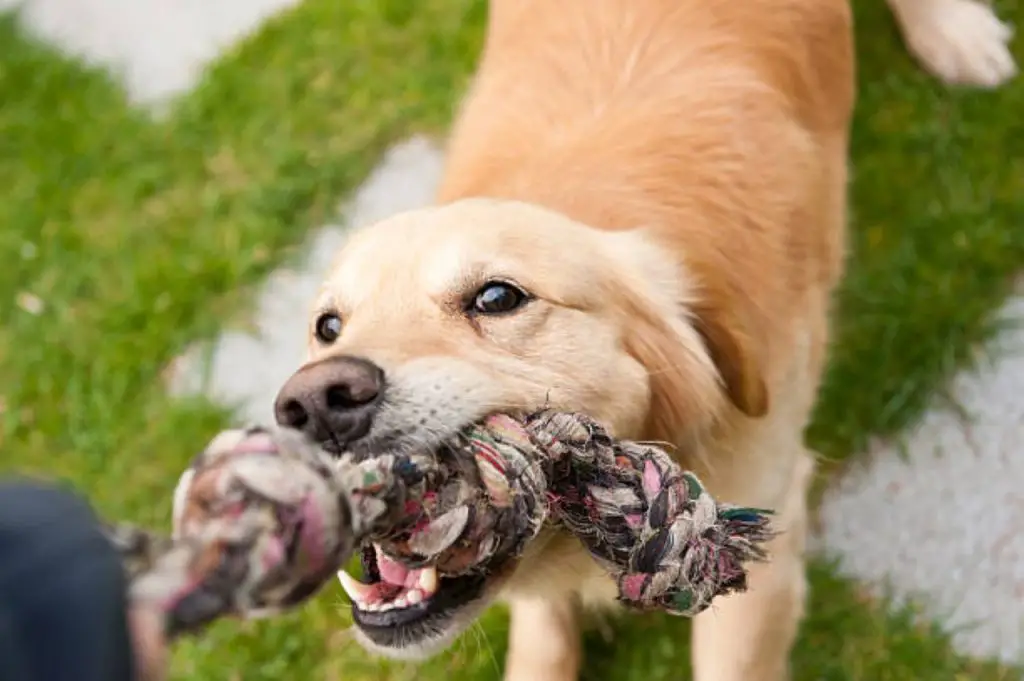
Some dogs can be particularly stubborn or possessive when it comes to dropping objects. Addressing these challenging behaviors requires a combination of patience, consistency, and targeted training techniques.
To overcome possessive behavior and stubborn tendencies, you’ll need to employ specific strategies that focus on behavioral modification and reinforcing the “drop it” command.
When dealing with stubborn or possessive dogs, consider the following approaches:
- Implement a robust reward system that outweighs the value of the item they’re holding.
- Increase command consistency by practicing in various environments and with different objects.
- Incorporate distraction techniques during training sessions to redirect their focus.
It’s essential to maintain high patience levels throughout the training process, as overcoming these behaviors takes time.
Utilize playtime importance by integrating “drop it” exercises into fun, engaging activities. This approach helps create positive associations with the command.
Additionally, focus on socialization strategies to reduce overall possessiveness and improve your dog’s willingness to relinquish items.
Remember that each dog is unique, so be prepared to adjust your training techniques based on your pet’s individual response and progress.
High-Value Items Resistance
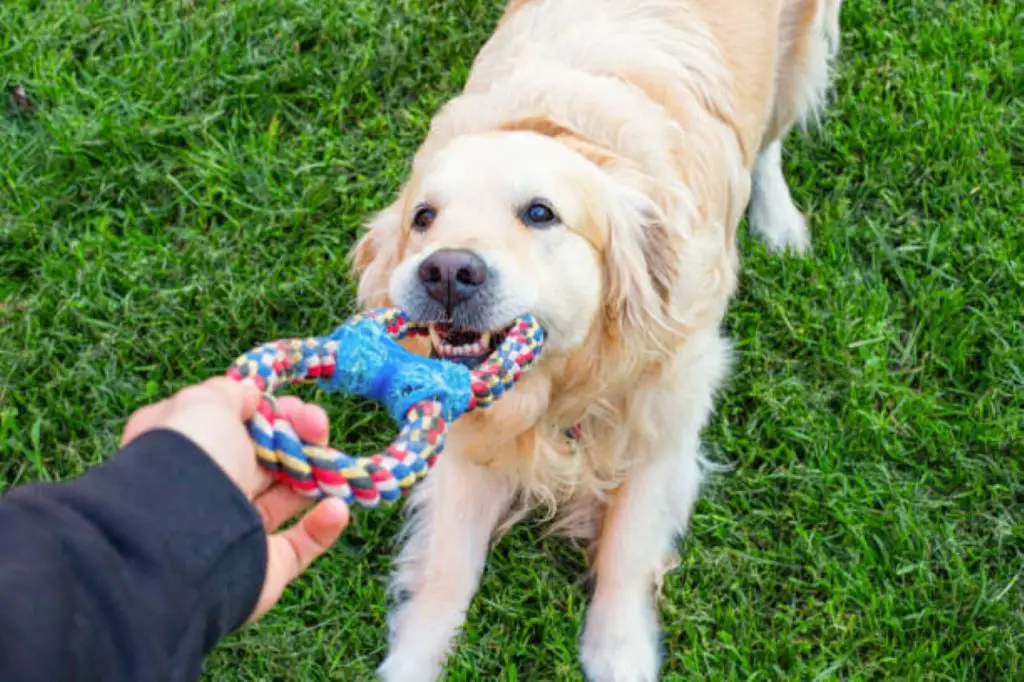
In spite of your best efforts, you may encounter resistance when training your dog to drop high-value items.
This challenge often arises because dogs naturally prioritize certain objects over others, creating a reward hierarchy in their minds. To overcome this, you’ll need to adjust your training approach.
Start by identifying which items your dog considers high-value. These might include favorite toys, bones, or even stolen household objects.
Next, gradually introduce these items into your “drop it” training sessions, but only after your dog has mastered the command with lower-value objects.
When working with high-value items, increase the value of your rewards accordingly. Use treats that surpass the item’s perceived value in your dog’s mind.
Implement high value distractions during training to simulate real-life scenarios. This could involve introducing enticing smells or sounds while asking your dog to drop the item. Consistently praise and reward your dog for compliance, even if it takes longer than usual.
If your dog refuses to drop a high-value item, avoid forcefully removing it, as this may lead to resource guarding. Instead, offer a trade for something even more appealing.
Inconsistent Command Response
One common challenge dog owners face is inconsistent response to the “drop it” command. This issue often stems from inconsistent cues, reward timing, or a lack of practice in various environments.
To address this problem, focus on consistency and precision in your training approach.
To improve your dog’s response to the “drop it” command:
- Use clear, consistent cues: Always use the same word or phrase for the command, and deliver it in a firm, steady tone. Avoid using multiple variations of the command, as this can confuse your dog.
- Perfect your reward timing: Immediately reward your dog when they drop the item. Even a split-second delay can weaken the association between the action and the reward.
- Practice in different settings: Gradually increase distractions and vary the training environment to guarantee your dog responds consistently regardless of the situation.
Remember to maintain patience and persistence throughout the training process.
If your dog’s response remains inconsistent, consider reassessing your training technique or consulting a professional dog trainer for personalized guidance.
With consistent practice and proper reinforcement, you can overcome this challenge and achieve a reliable “drop it” response from your canine companion.
Maintaining and Reinforcing the Skill
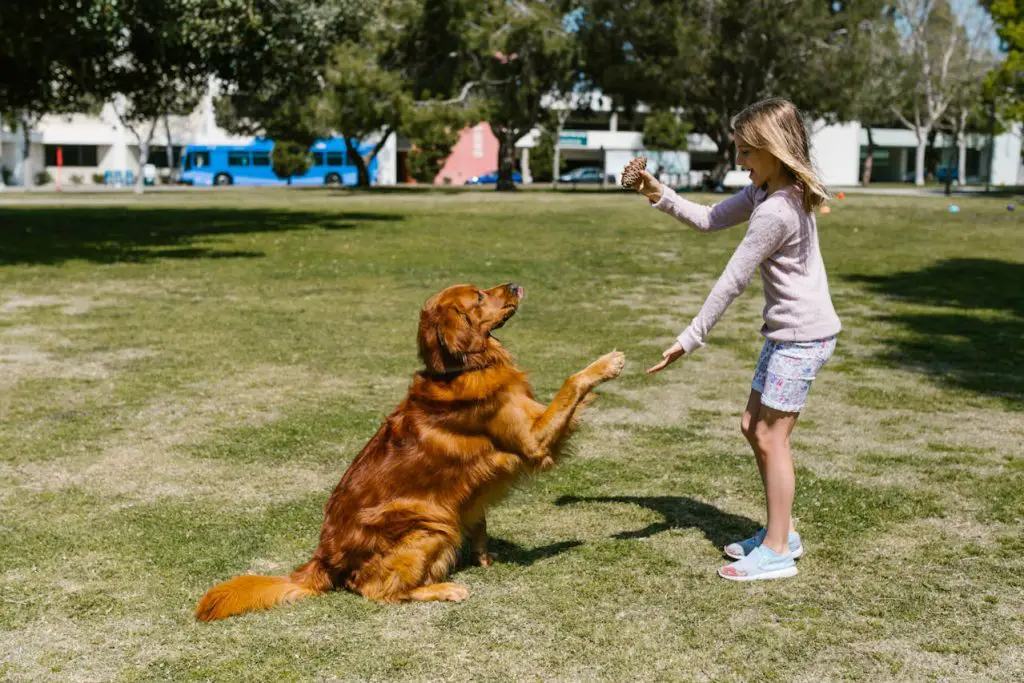
After successfully teaching your dog to “drop it,” maintaining and reinforcing the skill is vital for long-term success. Consistent practice and positive reinforcement are key to solidifying this behavior.
Implement a varied reward schedule to keep your dog engaged and motivated.
Gradually increase the difficulty of training sessions by introducing distractions and new environments. Maintain a regular practice frequency, incorporating short “drop it” exercises into your daily routine. This guarantees behavior consistency and prevents regression.
Use motivational techniques like high-value treats or favorite toys to sustain your dog’s interest. Remember, patience is required as you work towards mastery of the command.
Demonstrate handler confidence during training sessions, as your dog will pick up on your cues.
Effective distraction management is vital; start in low-distraction areas and progressively move to more challenging settings. Integrate “drop it” practice into bonding activities like fetch or tug-of-war to reinforce the command in playful contexts.
Frequent Questions and Answers
You should start teaching your dog the “drop it” command as early as 8 weeks old. Begin puppy training with simple objects and gradually increase difficulty. Consistent command reinforcement is key to success throughout your dog’s life.
Yes, “drop it” can greatly aid in preventing ingestion of harmful objects. You’ll enhance your dog’s harmful object awareness, giving you more control over what they pick up. It’s an essential command for their safety and your peace of mind.
You’ll find that mastering the “drop it” command varies by dog. With consistent training, most dogs learn in 2-4 weeks. Maintain command consistency and practice daily. Your dog’s age, prior training, and motivation level influence the training duration.
Yes, you should use hand signals alongside verbal commands in your training techniques. Pair a consistent gesture with “drop it” to reinforce the command visually. This dual approach enhances your dog’s understanding and response to the instruction.
You can teach older dogs the “drop it” command, despite ingrained habits. It’ll require patience and consistency. Use positive reinforcement and short, frequent training sessions. Gradually increase distractions to solidify the behavior in various situations.
